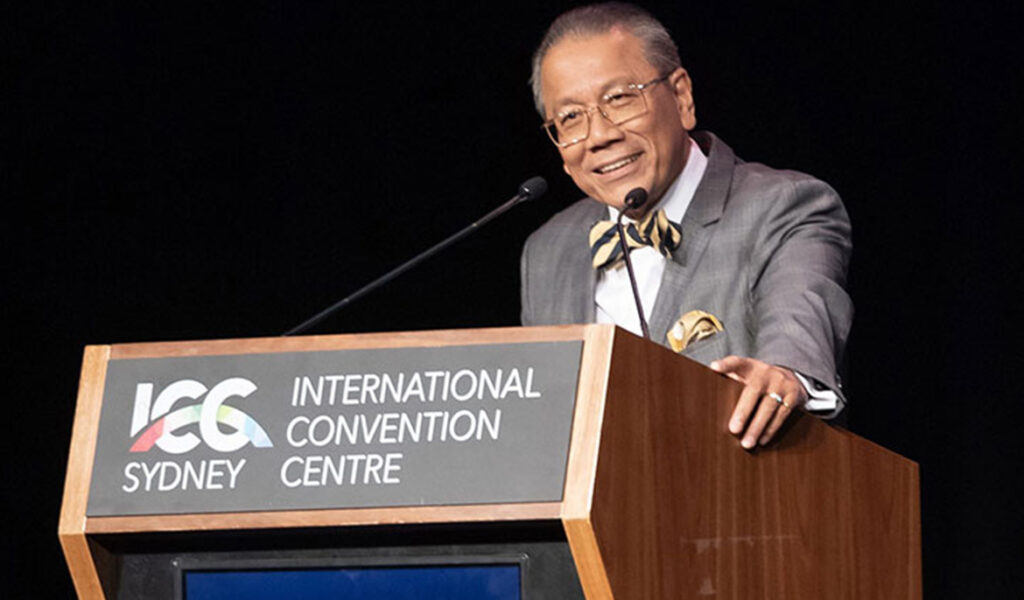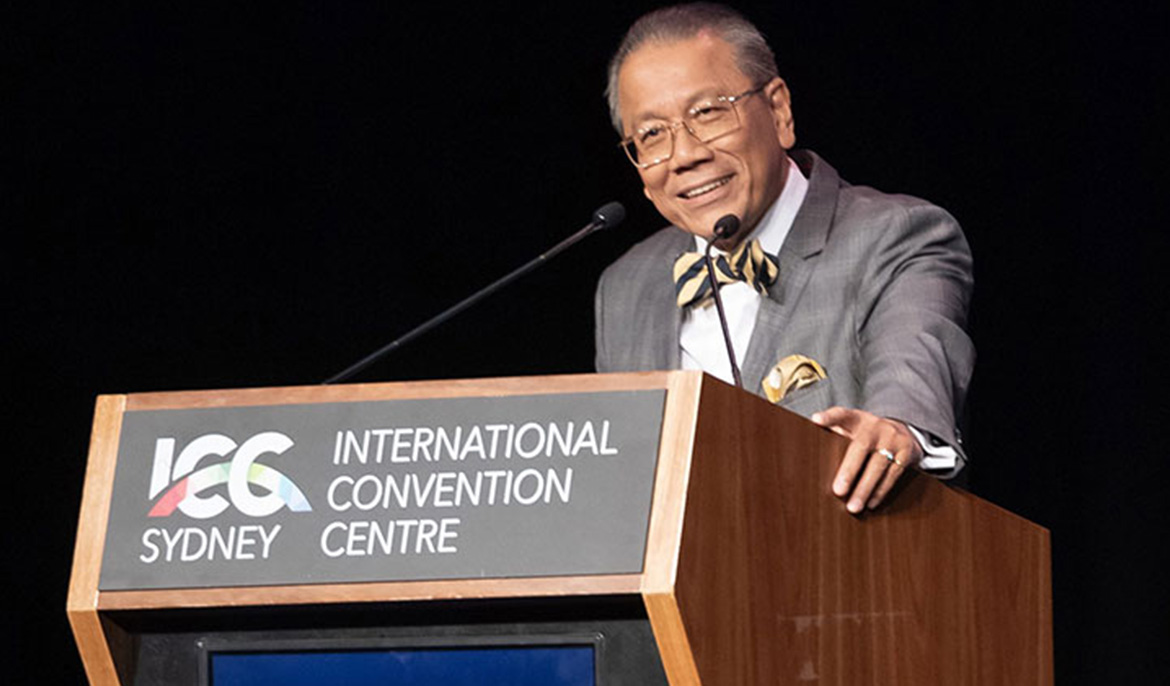The benefits of investing in ASEAN and Cambodia are clear and compelling, Australian businesses were told recently by Sok Siphana, Senior Minister in charge of Special Missions, Chairman of the Trade Policy Advisory Board (TPAB) and Chairman of the Committee on the Promotion of Resolutions of Private Sector Issues.
In his closing keynote address at the Australia-ASEAN Business Forum 2024 in Sydney on August 29, Siphana emphasized that ASEAN and Australia are natural partners due to their proximity and their vision for an Asia-Pacific region that is peaceful, stable and prosperous.
“ASEAN is a strategic gateway to the broader Asia-Pacific region and is one of the fastest growing regions in the world with the combined GDP of around $3.6 trillion and by 2040, ASEAN would be the fourth largest economy in the world, with a surging middle class out of ASEAN’s combined population of 670 million people,” the Senior Minister noted.
According to him, there are and will be plenty of business and investment opportunities in ASEAN for Australia in a diverse range of sectors including manufacturing, services, agriculture, technology and innovation, healthcare and more.
Siphana noted that the Regional Comprehensive Economic Partnership (RCEP), in which Australia and the ASEAN countries are partners, is the world’s largest trade agreement, encompassing 15 countries that collectively represent nearly 30 percent of global GDP and one-third of the global population.
This makes RCEP a powerful economic bloc with the potential to drive significant economic activity and growth. “In the face of rising protectionism and escalating trade tensions, particularly between major global powers, the significance of RCEP is greatly amplified,” Siphana pointed out.
Second, it is about its significant trade liberalization and market access, its reduction of tariffs and non-tariff barriers across a wide range of goods and services, which are expected to boost intra-regional trade, and create new opportunities for exporters and importers, he said.
Third, its clearer and more consistent investment rules are conducive to attracting more FDI for the region, thus driving industrial growth and innovation, and job creation, particularly for emerging economies.
Fourth, it is about strengthening regional supply chain resiliency through rules of origin simplification and customs procedures harmonization.
According to the Senior Minister, this integration allows businesses to source inputs from multiple countries within the bloc, increasing competitiveness and mitigating risks from global supply chain disruptions, particularly at a time of hectic friend-shoring or near-shoring supply chain redirections.
“With the US pulling out of the TPP and the prospect of a mooted IPEF, RCEP is the only game in town as it offers a vital platform for economic cooperation in the Asia-Pacific, helping member countries to withstand the destabilizing effects of global trade disputes,” he said.
According to the Senior Minister, by positioning itself at the center of RCEP, ASEAN has solidified its role as a critical hub in the Asia-Pacific economic landscape.
Since its implementation in 2022, ASEAN countries have experienced a significant boost in exports to other RCEP member states. Early data reflects this positive trend, with ASEAN’s total exports to RCEP partners rising from $885.5 billion in 2021 to $984.6 billion in 2023, representing an impressive compound annual growth rate of approximately six percent.
Siphana added that ASEAN’s leadership in RCEP is both symbolic and practical. “The ASEAN Framework for RCEP was carefully designed to align with broader regional goals, such as narrowing development gaps, enhancing connectivity, and promoting sustainable growth as is the case of a smaller country like my country, Cambodia.”
He also shared with the Forum an assessment of the projected economic impact of RCEP, done in 2022. The study assessed RCEP’s economic impacts using a computable general equilibrium (CGE) framework. A tariff reduction scenario projected a real GDP increase by $53 billion.
Adding service liberalization, it boosts GDP by $148 billion. With further logistics improvements, it raises another $235 billion. However, the most comprehensive scenario, which includes investment commitments, projects a substantial GDP increase of $675 billion. These findings underscore RCEP’s potential for significant economic growth through progressive trade and investment liberalization.
In Siphana’s view, RCEP is critical for Australia both economically and politically, as it accounts for about two-thirds of Australia’s total trade. The agreement aligns with Australia’s support for multilateral trade and regional integration, particularly in East Asia, which is crucial for Australia’s economic and strategic interests.
Second, RCEP is seen as a means to further East Asian economic integration and to avoid regional fragmentation. It provides a platform for Australia to engage with East Asian economies and manage its economic and political relations, particularly with China, within a multilateral framework. In terms of diversification and risk management, RCEP helps Australia manage the risks associated with over-reliance on any single market by broadening its economic engagements within the region.
Alluding to the theme of the forum ‘New Direction with New Opportunities,’ Siphana said that it is captivating and timely at a time of a major shift in the global geo-political and geo-economic landscape.
“Nowadays, this complex world order is no more defined by the hegemony of a single nation but a world of interconnectedness and interdependence. It is a world hustled by a multiplicity of actors ranging from new international and regional institutions, social movements, and transnational crimes,” he noted.
Referring to the trade actions initiated by the former Trump administration in the US, he said they were broadened by the Biden administration subsequently. “I foresee the trade and tariff war between China and the US will likely escalate, irrespective of whether Vice President Harris or Former President Trump wins the presidency,” the Senior Minister noted.
If re-elected, Trump has floated the idea of raising the tariffs to 60 percent, and he will try to revoke China’s ‘most favoured nation’ status, a trade status that the US granted China when it joined the WTO in 2001.
He has also vowed to end President Biden’s Indo-Pacific Economic Framework (IPEF), on day one. “Again, a déja-vu of the 2017 event, when President Trump withdrew the US from the ambitious Trans-Pacific Partnership (TPP) on his first day in office,” Siphana said.
For Trump, the IPEF is ‘TPP Two’ even though it is about cooperation on supply chains and does not eliminate tariffs nor increase market access to the US. Trump pledged to impose a ‘universal’ tariff on most imports while matching higher tariffs imposed by other countries on US products.
Trump also called WTO a ‘disaster’ and threatened to withdraw from the body, accusing other members of abusing WTO rules that give developing countries more flexibility.
Siphana said that multilateralism is also under threat, mainly due to rising protectionism and transactional politics in the US. Forums like the G-20 which came about to leverage the economic power of the 20 richest countries around a unified response to international challenges found little unity at the moment.
“For our part of the world, we see the rise of the political-security minilateralism driven by geopolitical agendas as exemplified by the proliferation of various US-led partnerships and initiatives including the Free and Open Indo-Pacific Strategy, the Quadrilateral Security Dialogue, the Indo-Pacific Economic Framework, and the Australia-United Kingdom United States (AUKUS) Security Alliance,” he noted.
The Senior Minister also dwelt on the longstanding bilateral and regional partnership between Australia and Cambodia, with more than 72 years of bilateral relations.
“Australia’s significant contribution to our peace process in the 1990s was an important milestone in its long history of cooperation,” he acknowledged.
“Cambodia has embraced the globalization process as part of its outward-looking development strategy. Building on the positive externality of the WTO accession process some 20 years ago we have steadily engaged in substantial trade liberalization and broad-based economic reforms,” Siphana noted.
“We have diversified our economy beyond garments and footwear and explored new economic frontiers in the emerging ICT, automobiles and electronics, mining, and financial services sectors to sustain our productivity and competitiveness. As a matter of fact, we have gold mines which are currently operated by an Australian company.”
With an average annual GDP growth rate of seven percent before the COVID-19 pandemic, Cambodia’s economy is expected to grow at around 5.8 percent this year, and a forecasted growth of around six percent next year.
“In terms of trade and FTAs, Cambodia is a small state and its relations with other states will always be driven by trade. Cambodia’s trade volume has been on the rise for the past two decades, reaching $48 billion in 2023,” Siphana said.
To this end, he hoped that the newly established ASEAN-Australia Centre would serve as an important platform to promote more direct flights from Australia to major Southeast Asian cities and enhance ASEAN-Australia cultural exchange and people-to-people links.



